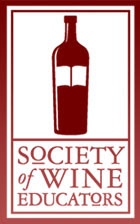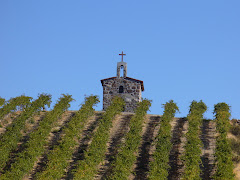 In yesterday’s post, I spoke to you about South Africa’s Wine of Origin, mentioning it briefly. The establishment of the WO in 1973 was to follow the examples set forth in the wine trade by the French and Italian governments, in the hopes of better controlling the quality of South African wines, and to arrange a kind-of “quality” hierarchy.
In yesterday’s post, I spoke to you about South Africa’s Wine of Origin, mentioning it briefly. The establishment of the WO in 1973 was to follow the examples set forth in the wine trade by the French and Italian governments, in the hopes of better controlling the quality of South African wines, and to arrange a kind-of “quality” hierarchy.If W.O. status is awarded to a winery, it guarantees to the consumer that the location on the label is exactly where the grapes originated. It also guarantees that if both grape variety and vintage on presented on the label, the wine is at least 75% of that varietal and that vintage year. Yet W.O. status is not granted automatically. Wines must be submitted by the winemakers themselves in order to be eligible, so a vintner can determine he doesn’t necessarily want W.O. status, and can thereby use the freedom of being unlabeled to blend as he/she sees fit.
There are 5 subdivisions under the general term of “origin:”
1. Estate = This refers to an estate that may consist of one or more farms, the estate uses grapes only for its own production of wine and the vinification process takes place ON THE ESTATE.
2. Ward = Small, defined growing area such as Constantia and Franschoek.
3. District = A large, contiguous area such as Stellenbosch or Paarl.
4. Region = A vast viticultural area such as the Breede River Valley in Stellenbosch.
5. Wineland = Not official; denotes the importance of the wine regardless of origin.
The major wine regions of South Africa are: Swartland, Tulbagh, Paarl, Stellenbosch, Worcester, Robertson, Darling, Walker Bay, Constantia (ward), and Durbanville (ward). The largest of these is Worcester, yet the most recognized worldwide is Stellenbosch.
Stellenbosch, the region, boasts approximately 44,000 acres of vineyard, as well as the top enological and viticultural university on the continent, the University of Stellenbosch. Pinotage, the crossing of Pinot Noir and Cinsaut (known at the time in South Africa as hermitage) was created there in 1925 by Abraham Perold. For decades, there were only a few producers who treated the grape as a major variety, with most winemakers poorly vinifying or overproducing the grape, turning it into the polarizing grape it has a reputation for today. Many South African winemakers these days are establishing its benefits in blending, creating “Cape Blends” with either Cabernet Sauvignon, Merlot and/or Shiraz to maintain its unique winemaking identity in the world, and its proving to be a great combination.
Stellenbosch is where many of the best Pinotages are found, as well as the rise of world-renowned Sauvignon Blancs and Chenin Blancs. Also grown here are Cabernet Sauvignon, Cabernet Franc, Chardonnay, Merlot, and Semillon.
This weekend, I will have some tasting notes from a couple of Stellenbosch wines so stay tuned.











No comments:
Post a Comment